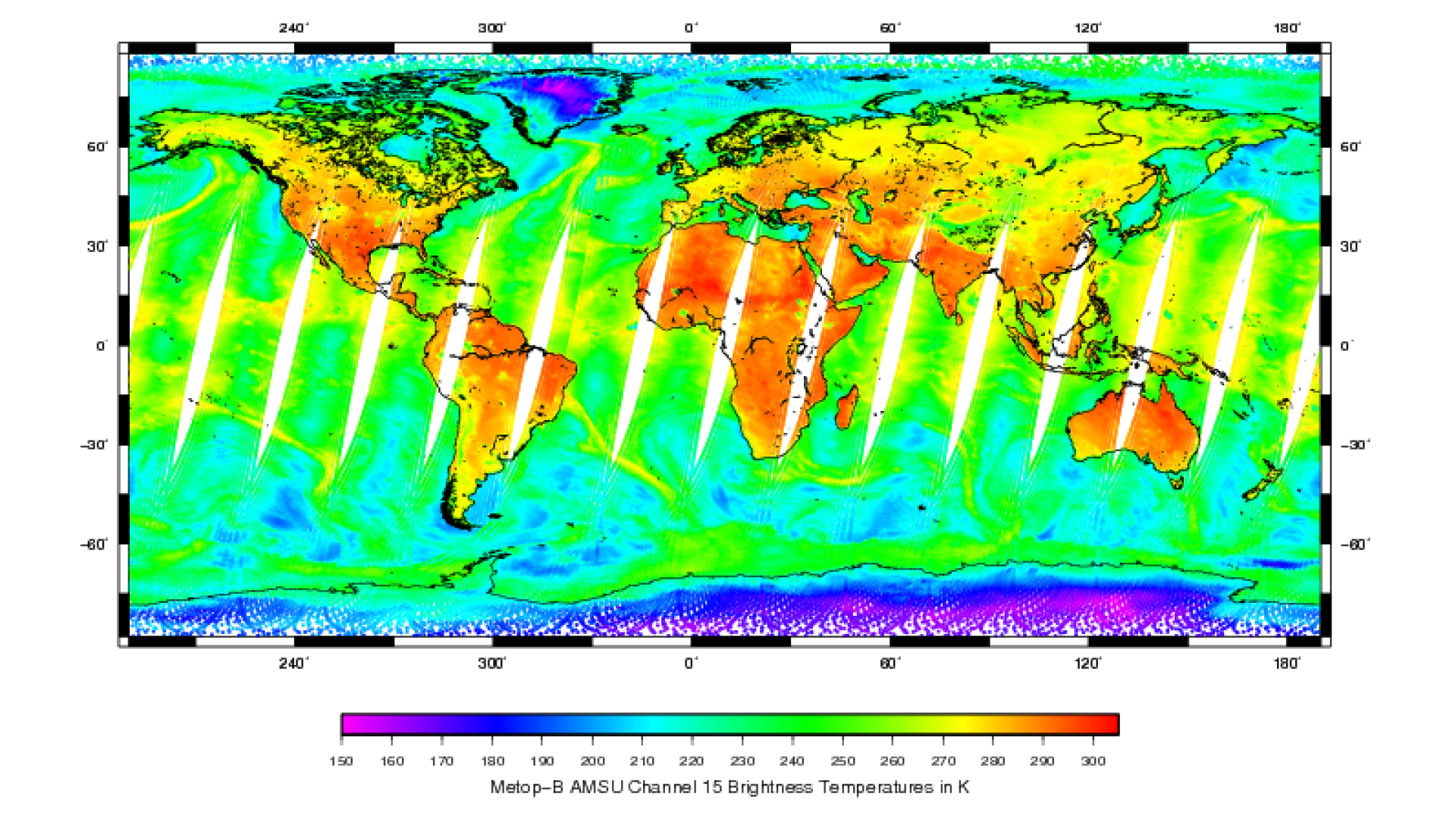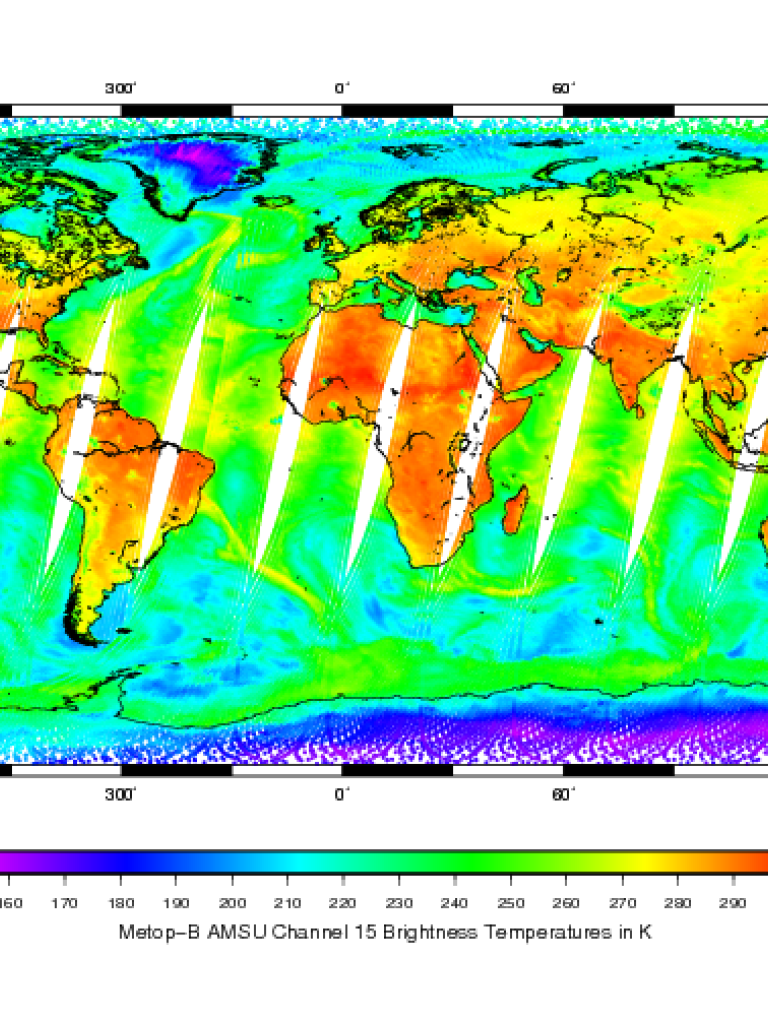
Metop-B delivers first data from polar orbit


Four of the instruments on the Metop-B weather satellite (AMSU-A, ASCAT, MHS, GRAS) have been activated this week and are delivering data.
05 November 2024
28 September 2012
September 28, 2012 Metop-B delivers first data from polar orbit Four of the instruments on the Metop-B weather satellite (AMSU-A, ASCAT, MHS, GRAS) have been activated this week and are delivering data.
This demonstrates that Metop-B, launched on 17 September, is performing well and is on its way towards replacing the ageing Metop-A as prime operational satellite in polar orbit, after the six-month commissioning phase.
The Advanced Scatterometer (ASCAT) and Microwave Humidity Sounder (MHS) are innovative European instruments. ASCAT delivers information on near-surface wind speed and direction over the global oceans and soil moisture over land, while the MHS delivers information on atmospheric humidity in all weather conditions.
The Advanced Microwave Sounding Unit-A (AMSU-A) is an American heritage instrument already flying on the US NOAA satellites, providing temperature soundings in all weather conditions.
The Global Navigation Satellite System Receiver for Atmospheric Sounding (GRAS) instrument is delivering data which are used to provide atmospheric temperature and humidity profiles by measuring the bending of GPS signals through the atmosphere. Data from GRAS are also used for precise orbit determination of the Metop-B satellite before and after the nominal stop-drift manoeuvre, in conjunction with traditional ranging and Doppler measurements.
Temperature and humidity soundings, wind at the ocean surface, and soil moisture are essential inputs to Numerical Weather Prediction (NWP) models, the basis of modern weather forecasting. The all-weather wind measurements provided by ASCAT are used worldwide to track mid-latitude storms and tropical cyclones.
These instruments also contribute to the long-term data sets needed for climate studies and monitoring.
The first data delivered by the European instruments are a joint achievement by ESA, EUMETSAT, and the European space industry. For its mandatory programmes, EUMETSAT relies on ESA for the development of new satellites and the procurement of recurrent satellites like Metop-B. This cooperation model has made Europe a world leader in satellite meteorology by making best use of the respective expertise of the two agencies.


About Metop
The Metop satellites are Europe’s first operational meteorological satellites in polar orbit. They constitute the space segment of the EUMETSAT Polar System (EPS) delivering data for numerical weather prediction (NWP) – the basis of modern weather forecasting – and climate and environmental monitoring.
Flying at an altitude of 817 km, each Metop satellite carries the same sophisticated suite of instruments providing fine-scale global data, which can only be gathered in the low Earth orbit, such as vertical profiles of atmospheric temperature and moisture, wind speed and direction at the ocean surface, and some atmospheric trace gases.
Observations from Metop-A have significantly improved weather forecasts up to 10 days ahead. These forecasts are essential to protect life and limit damage to property, but they also benefit the weather-sensitive sectors of the European economy, especially energy, transportation, construction, agriculture and tourism.
The three Metop satellites, launched sequentially, will provide continuous data until 2020. The first satellite, Metop-A, was launched in 2006, and the third and final satellite, Metop-C, is scheduled for launch at the end of 2017.
ESA is responsible for the development of the three Metop satellites, fulfilling user and system requirements defined by EUMETSAT. ESA also carries out operations for the Launch and Early Orbit Phase to place the satellites in polar orbit, before handing them over to EUMETSAT for commissioning and exploitation. EUMETSAT develops all ground systems required to deliver products and services to users and to respond to their evolving needs, procures launch services and operates the full system for the benefit of users.
The EPS programme is Europe’s contribution to the Initial Joint Polar System (IJPS), with the US National Oceanic and Atmospheric Administration (NOAA).


